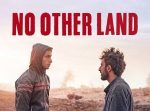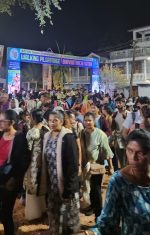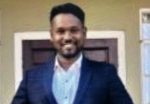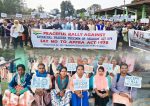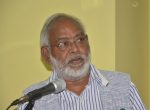By Stanislaus Alla
New Delhi, Aug 28, 2023: Possibly, no Pope has ever visited a country that houses a little flock — about 1,500 Catholics. In modern times Pope Paul VI initiated international travels, and Saint John Paul II, during his long papacy, visited 129 countries. Since 2013, Pope Francis has visited several counties and they include our immediate neighbours – Bangladesh, Myanmar and Sri Lanka.
While Pope Francis travels to the major Catholic nations, he always makes it a point to visit some of the marginalized and the lesser-known countries – a feature that is also noted when he names the cardinals.
Mongolia is among the several nations that get to see the Pope for the first time on their soil.
From the Papal-visit (from August 31 to September 4) point of view, Mongolia is a very unusual country. Cardinal Giorgio Marengo, the 49-year-old Italian who belongs to the Institute of Consolata Missionaries and the youngest of the Cardinals, heads the Catholic Church there.
The Church’s 2020 census says Mongolia has 1,354 Catholics spread in nine parishes. They are served by five diocesan and 18 Religious priests. A few more Religious complete the chart. If ever they were to assemble, Mongolia may be the only country in the world where all Catholics have a real chance of getting to know the others!
History lessons remind us that Mongolia ruled over the largest empire in the world that existed ever (it is said that at its glory, Mongolian empire covered nearly about a quarter of the world’s habitable land and population) and Genghis Khan (1162-1227), a ruthless expansionist, was largely responsible for it.
Eventually it disintegrated, and today’s Mongolia is a medium size land-locked country that shares borders with China and Russia, ferocious military powers. A majority in this 3.5-million nation follows Buddhism while others follow other ways of life.
Why does Pope visit Mongolia? Obviously, the Pope’s pastoral visit will strengthen the faith of the Catholic community and foster bilateral relations. The public Masses are likely to be simpler but profoundly connecting and meaningful to the participants.
As in other contexts, the Pope will meet the national officials, secular leaders, and then, will participate in the ecumenical and diner religious meetings.
Even though several attempts have been made from many decades from the side of the Vatican, Russia and China have not allowed Papal visits to their countries. Putin met Pope Francis elsewhere but not in Russia. Similarly, same thing goes with Xi Jinping or other Chinese leaders. Complex cultural, religious and political reasons have made these encounters difficult, almost impossible.
From his side, Pope Francis has been going out of the way and reaching out: he sends cardinals or others to speak to leaders in order to avoid conflicts and promote peace. In a way, by being in and blessing Mongolia, literally and physically, Pope Francis will be reaching the closest a Pope can ever get to, both Russia and China.
May this pilgrimage, titled ‘Hoping Together,’ enable us, especially Russia and China and others, to overcome the obstacles they/we have in hearts and thoughts, and may all strive for global peace and prosperity.
Three takeaways from this are:
1) it is important to keep the little flocks and their faith-stories at the center of our shared pilgrimage and not to ignore/forget them
2) go out of the way and try to reach out to the other communities even if they are stubbornly refusing to meet or work together, and
3) find ways to foster inter religious dialogue so that, we who belong to diverse religions in the world can learn to appreciate others and find ways to work together.
(Jesuit Father Stanislaus Alla teaches moral theology at Delhi’s Vidyajyoti College of Theology)

